NASM CPT 7th Edition (Chapter 1)
1/59
There's no tags or description
Looks like no tags are added yet.
Name | Mastery | Learn | Test | Matching | Spaced |
|---|
No study sessions yet.
60 Terms
Kinesiology
Study of movement as it relates to anatomy and physiology
Obesity
A complex disease involving an excessive amount of body fat; classified by a body mass index of 30 or greater
Musculoskeletal System
The combined, interworking system of all muscles and bones in the body
Deconditioned
A state of lost physical fitness, which may include muscle imbalances, decreased flexibility, and a lack of core and joint stability
Overweight
A body weight greater than what is considered within normal standards; a body mass index of 25.0 to 29.9
Muscle Imbalance
When muscles on each side of a joint have altered length-tension relationships
Joint Stability
The support provided by tissues surrounding a joint to maintain and provide control during movement
Types of Training
Flexibility and mobility
Core strength and stability
Cardiorespiratory (cardio)
Balance
Plyometrics
Speed, agility, and quickness
Resistance
Health (WHO 1984)
a state of complete physical, mental, and social well-being, and not merely the absence of disease or infirmity
Homeostasis
The process by which the human body strives to maintain a relatively stable equilibrium
Spectrum of Health
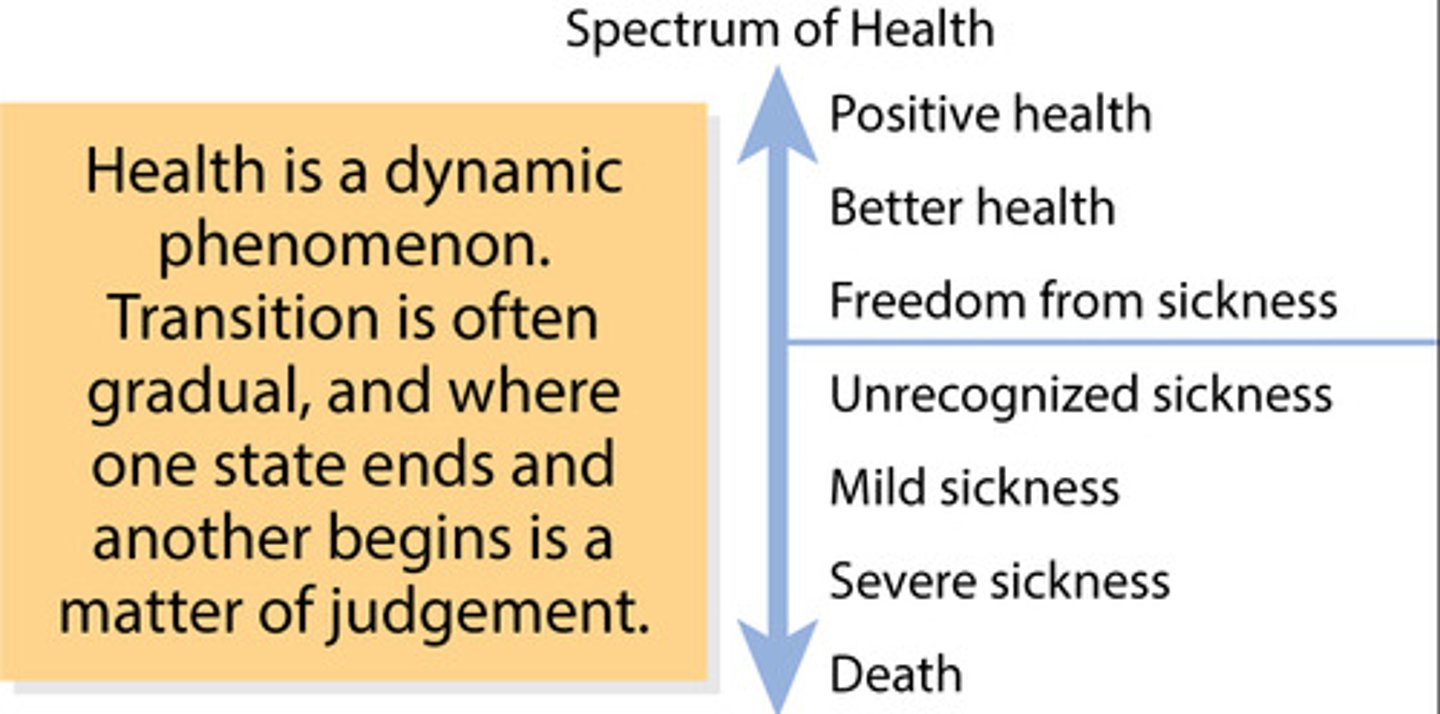
Disease
any abnormal condition that negatively affects the structure or function of a part of the body.
Two basic types: chronic/noncommunicable disease and acute disease
Noncommunicable Disease (NDC)
also known as chronic diseases, tend to be of long duration and are the result of a combination of genetic, physiological, environmental and behavioral factors.
Cardiovascular diseases, cancers, chronic respiratory diseases, diabetes
Acute Disease vs Chronic Disease
medical event or disease that occurs suddenly and can be treated and healed in a short period of time, while chronic diseases are medical conditions that persist for a long duration or cannot be cured altogether
Leading Causes of Death
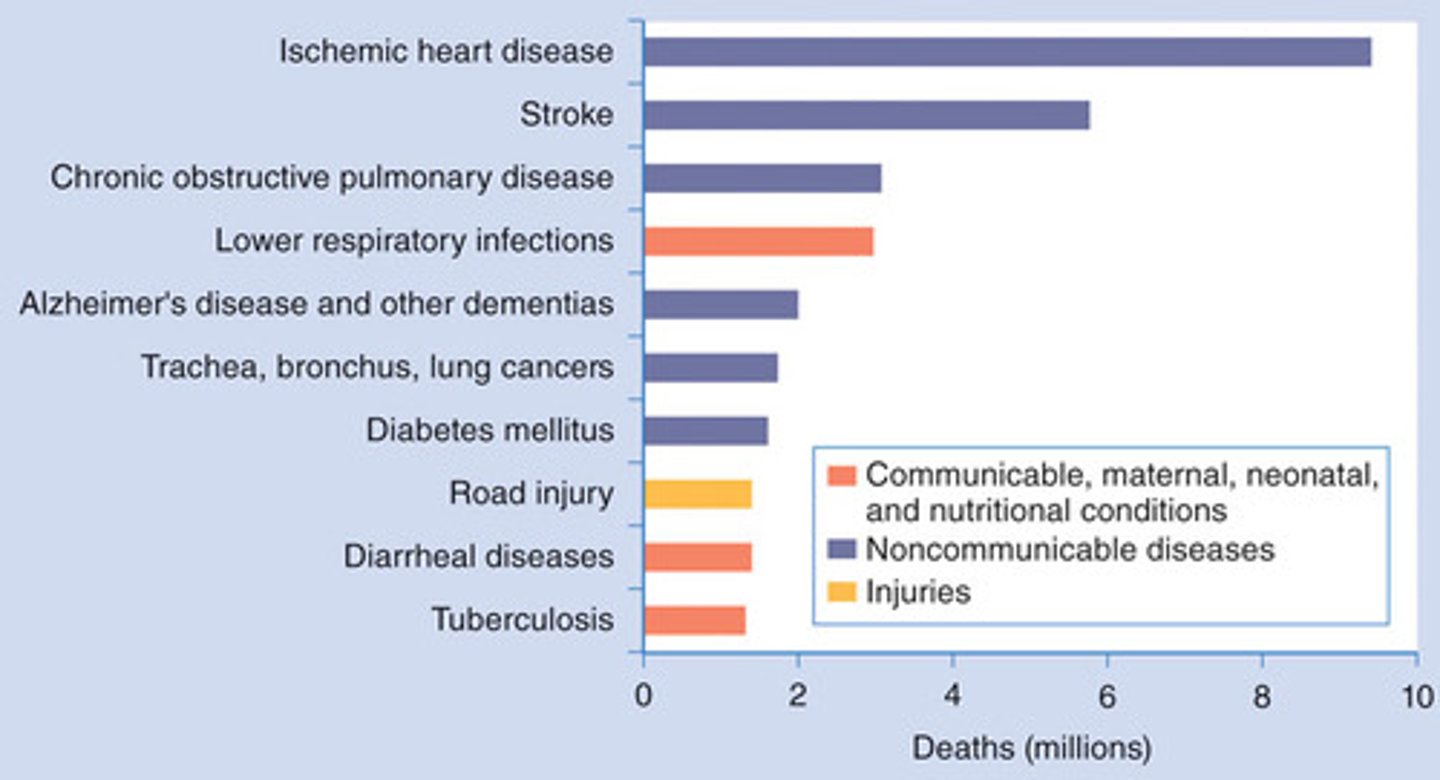
Preventable Causes of Death
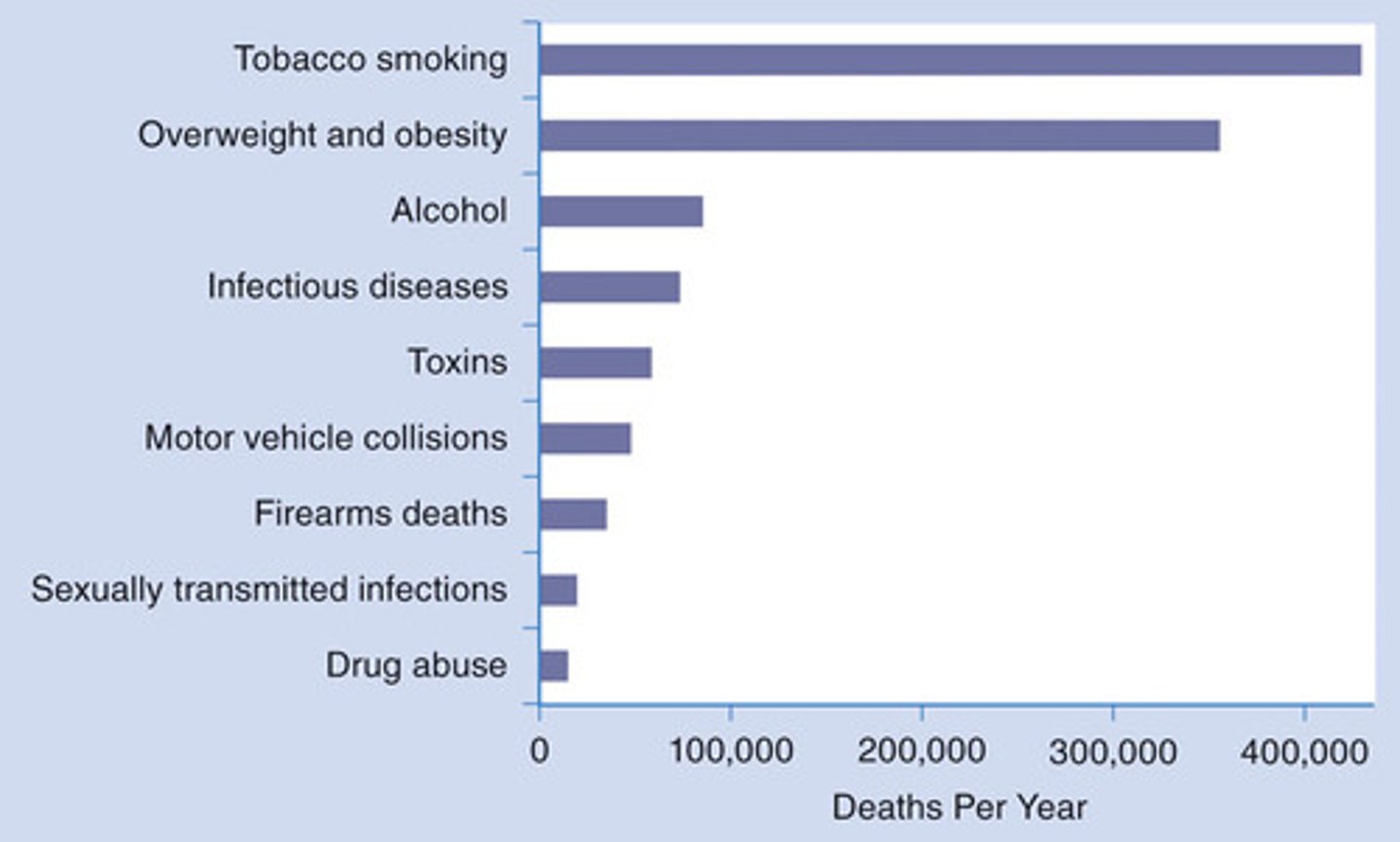
Prevalence of Physical Inactivity Worldwide
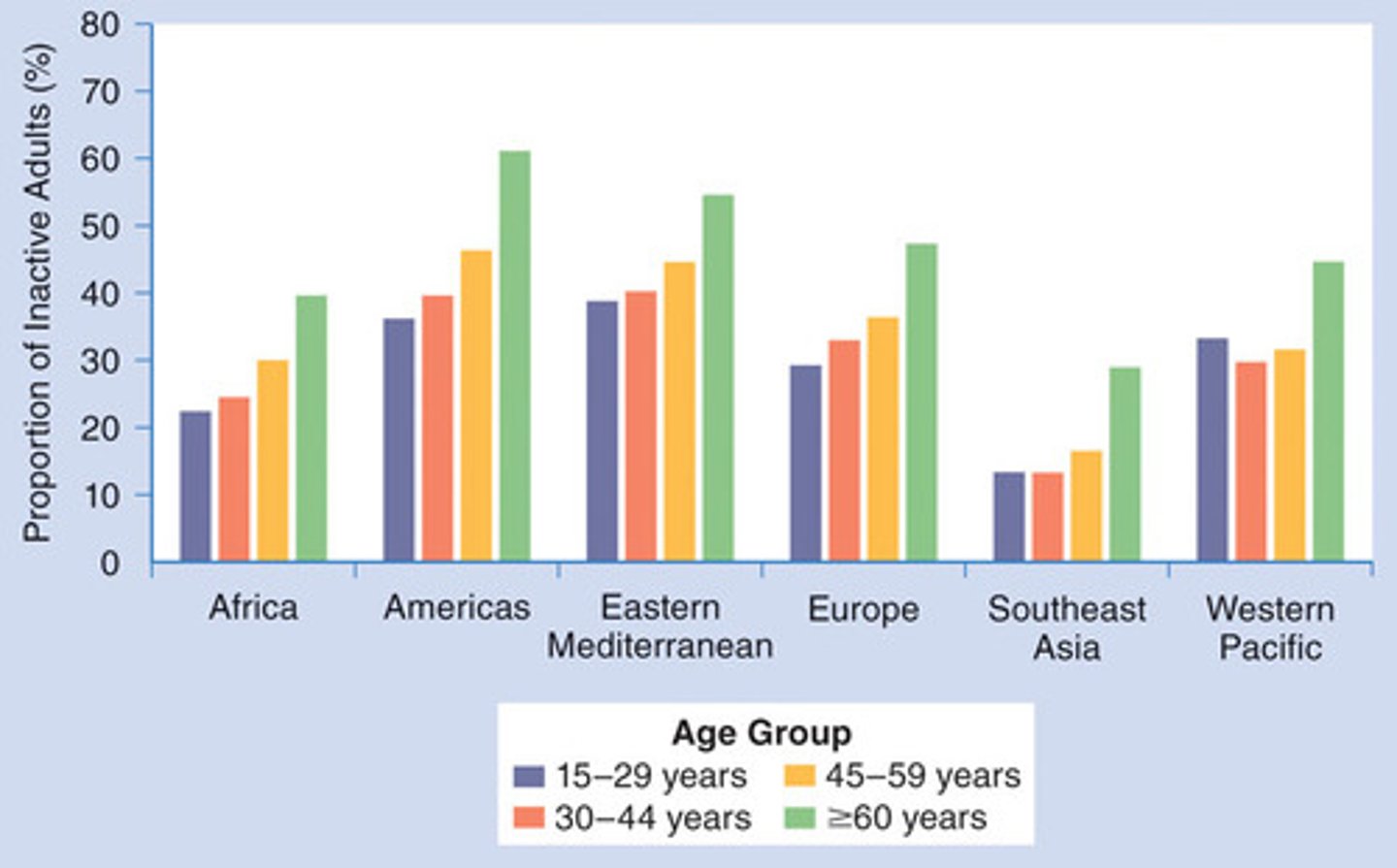
Risk Factor
Any attributer, characteristic, or exposure of an individual that increases the likelihood of developing a disease or injury
Cholesterol
A waxy, fatlike substance found in bodily cells
Metric BMI Formula
BMI = weight (kg) ÷ [height (m)]2
Imperial BMI Formula
703 × weight (lb) ÷ [height (in.)]2
BMI Classification
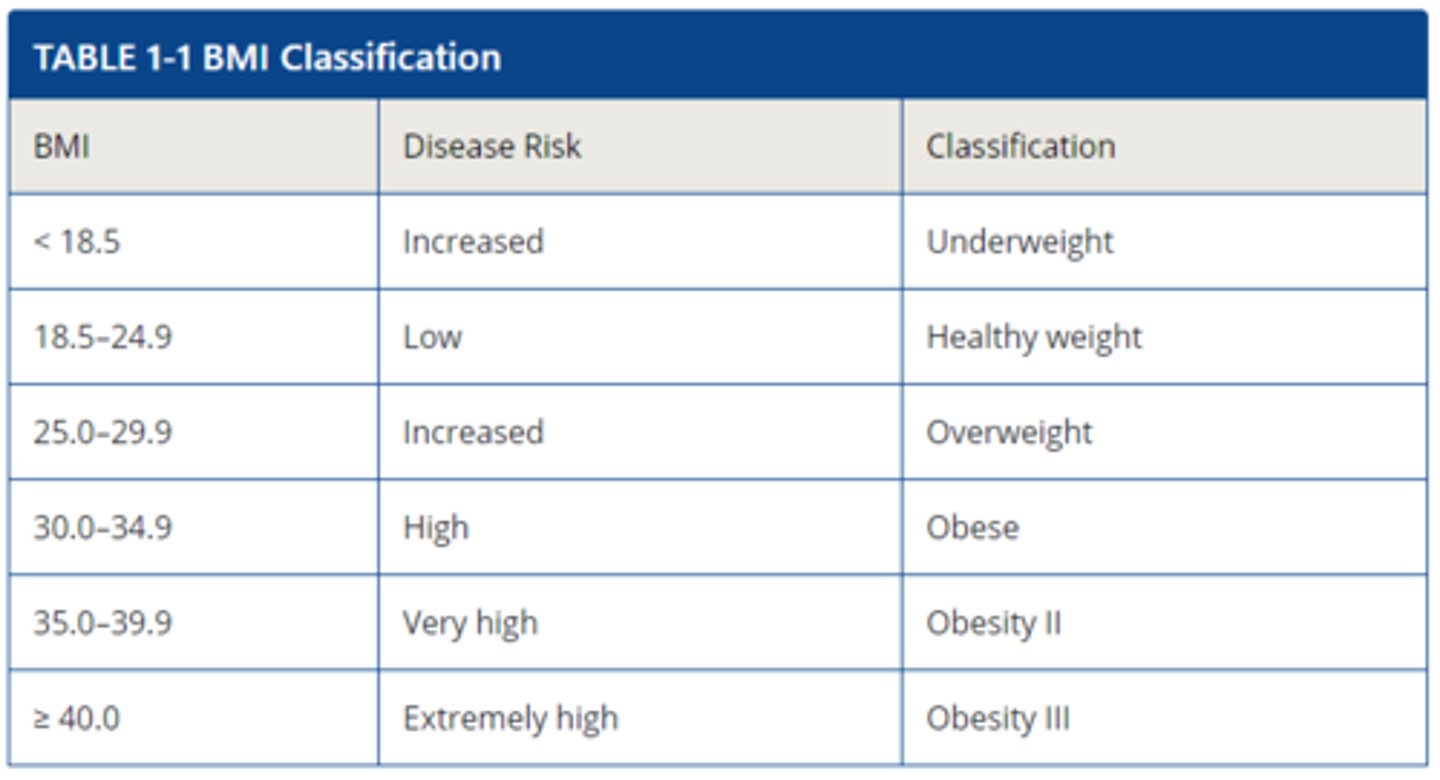
Percentage of People That Lose Weight with 1 hour of Exercise per day
90% (over several years)
The Healthcare Continuum
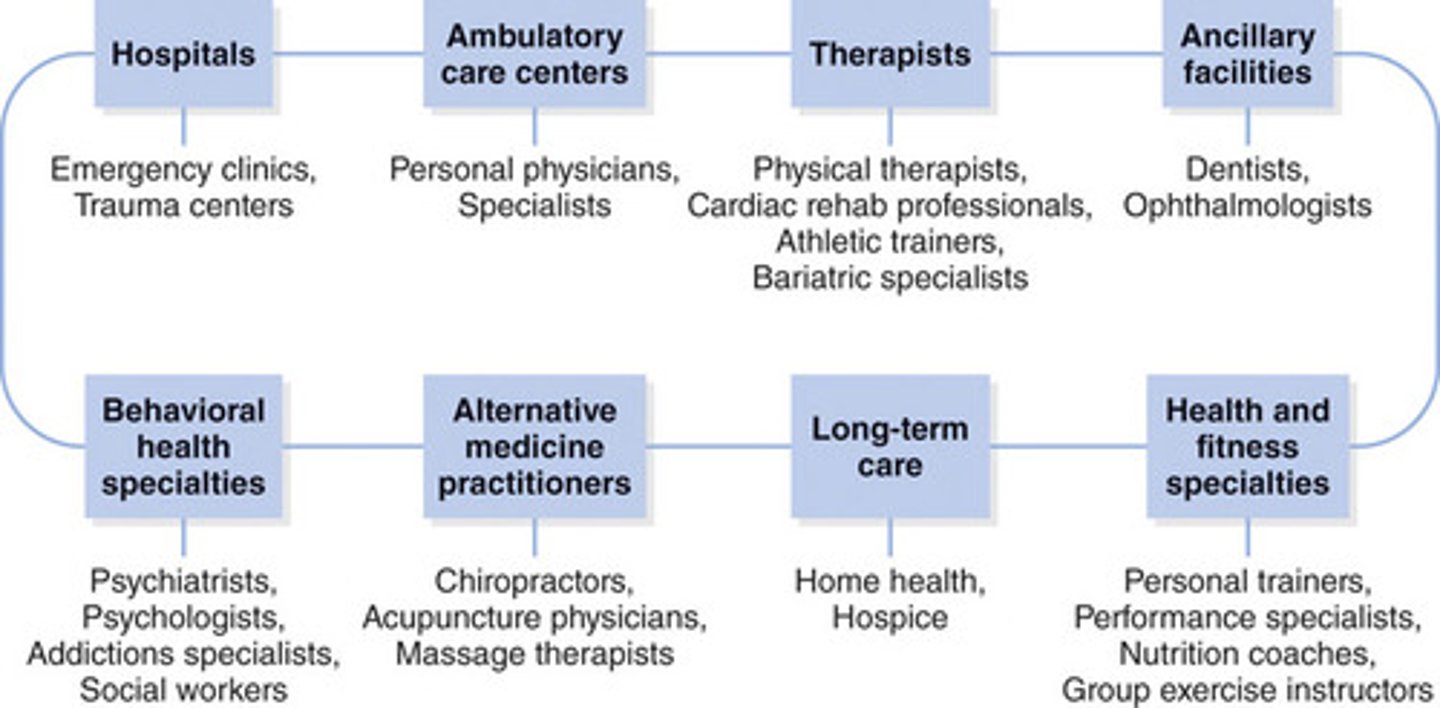
Physical Therapist
a practitioner who is educated in many areas of physical rehabilitation and can work in many settings such as hospitals, rehabilitation centers, nursing homes, schools, and fitness or sports conditioning facilities to help individuals return to regular activity following an injury
Athletic Trainer
works alongside physicians, emergency medical technicians, and other healthcare providers to help diagnose and treat injuries. and can also work in a variety of fitness-related settings or schools
Chiropractors
a licensed healthcare professional who primarily deals with conditions relating to spinal alignment. uses manual manipulation of the vertebrae to help alleviate nervous system dysfunction because all nerves in the body connect to the spinal cord
Registered Dietitian Nutritionist
food and nutrition experts who have met specific academic and professional requirements and passed the required national certification exam. These professionals provide nutritional advice, therapy, and counseling to a wide range of clients or patients, often specializing in nutritional therapy for the treatment and management of chronic disease.They can work in many settings such as hospitals, nursing homes, schools, and fitness or sports conditioning facilities
Licensed Massage Therapists (LMTs)
professionals who practice massage therapy and are licensed to therapeutically manipulate the muscles and other soft tissues of the body through physical touch. and can work in a variety of settings, such as rehabilitation centers, fitness or sports performance facilities, and luxury resorts and spas, or work as an independent contractor
Evidence-Based Practice
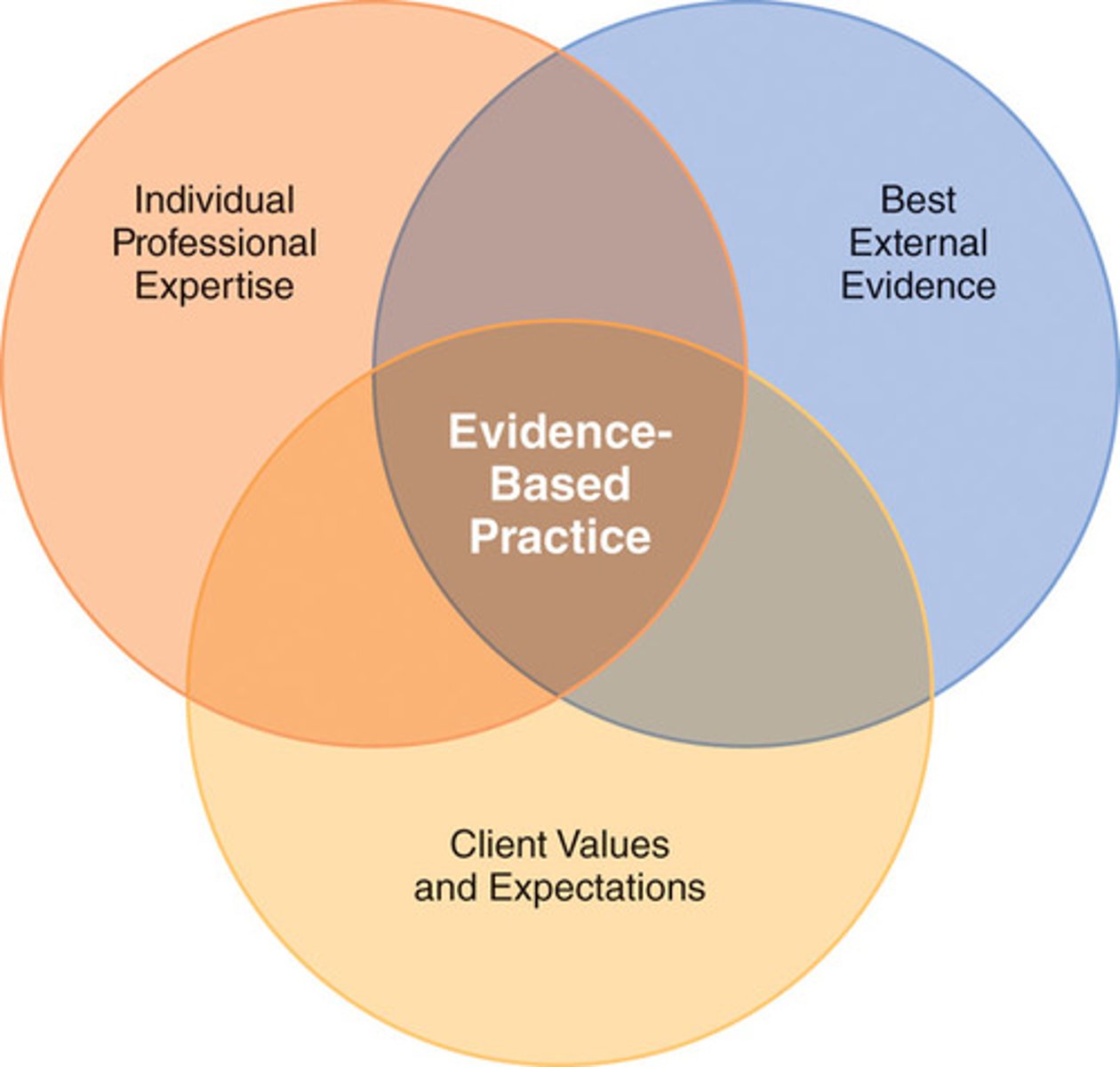
Morbidity
The state of having a disease
Mortality
A state or risk of dying
Stroke
A sudden lack of blood supply to the brain, caused by either a blockage in an artery or ruptured blood vessel
Heart Attack
The action that occurs when an artery supplying the heart with blood and oxygen becomes blocked; medically known as a myocardial infarction
Heart Failure
A condition in which the heart can't pump enough blood to meet the body's needs
Heart Valve Problem
A condition that occurs when one or more heart valves do not function properly, causing shortness of breath and reduced oxygen supply to the body
Arrhythmia
A problem with the rate or rhythm of a person's heartbeat. The heart beats too quickly, too slowly, or with an irregular pattern.
Ischemic Heart Disease
A category of heart-related problems caused by the narrowing of coronary arteries, which supply blood and oxygen to the heart muscle
Atherosclerosis
The processes by which plaque is formed in arteries leading to reduced blood flow
Physical Activity
Bodily movement that results in energy expenditure and encompasses many modes and intensities. Movement that is not structured exercise such as recreational pursuits
Hypertension
Consistently elevated blood pressure
Systolic Blood Pressure (SBP)
The pressure in arteries and other blood vessels when the heart is contracting; the first (top) number recorded
Diastolic Blood Pressure (DBP)
The pressure in arteries and other blood vessels when heart is at rest or between beats; the second (bottom) number recorded
Blood Pressure Classifications
Normal (healthy): Less than 120/80 mm Hg
Elevated: Systolic between 120 and 129 and diastolic less than 80 mm Hg
Stage 1 Hypertension: Systolic between 130 and 139 or diastolic between 80 and 89 mm Hg
Stage 2 Hypertension: Systolic 140 or higher or diastolic 90 mm Hg or higher
Hypertensive Crisis: Systolic greater than 180 and/or diastolic greater than 120 mm Hg (Whelton et al., 2018)
Dyslipidemia
Elevated total cholesterol
Low-Density Lipoprotein (LDL)
"bad cholesterol," the form of cholesterol that makes up the plaque that clogs arteries.
Ideally less than 100 mg/dL
High-Density Lipoprotein (HDL)
"good cholesterol", the form of cholesterol that helps remove LDL cholesterol from the body
Ideally around 60 mg/dL
Diabetes
Chronic metabolic disorder, caused by insulin deficiency, which impairs carbohydrate usage and enhances usage of fat and protein
Glucose
The simplest form of carbohydrate used by the body for energy
Insulin Resistance
The inability of the cells to respond to insulin; occurs in Type 2 Diabetes
Cancer
A group of diseases involving abnormal cell growth with the potential to invade or spread to other parts of the body
Chronic Obstructive Pulmonary Disease (COPD)
A general term used to describe progressive lung diseases, including emphysema, chronic bronchitis, and refractory (nonreversible) asthma
Endorphis
A group of hormones secreted by the brain that provides a variety of physiological functions, such as reducing the perception of pain
Skeletal Muscle
The type of muscle tissue that connects to bones and generates the forces that create movement
Sprain
A stretching or tearing of ligaments
Plantar Fasciitis
An inflammation of the fibrous tissue (plantar fascia) along the bottom of the foot, which often results in intense heel pain
Patellar Tendonitis
An injury or inflammation of the tendon that connects the Patella (kneecap) to the Tibia (shin bone)
Anterior Cruciate Ligament (ACL) Tear
A stretch, partial tear, or complete tear of the anterior cruciate ligament of the knee
Medial Cruciate Ligament (MCL) Tear
A stretch, partial tear, or complete tear of the medial collateral ligament of the knee
Shoulder impingement Syndrome
Shoulder pain caused by rotator cuff tissues rubbing against the acromion bone of the shoulder